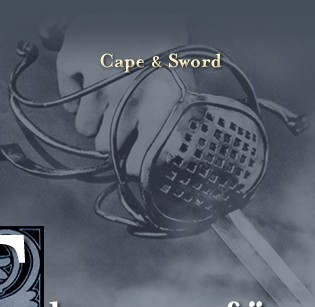The genre of "cape and epee": the swashbuckler
 It is impossible to imagine the swashbuckler - or "cape and sword" (cape et épée) genre as it is known in France - without the presence of a hero like d'Artagnan.
It is impossible to imagine the swashbuckler - or "cape and sword" (cape et épée) genre as it is known in France - without the presence of a hero like d'Artagnan.
This leaping and parrying hero of amazing adventures, quick to draw his sword in defence of France and his king, seducer who lived the good life, and at the same time comical and all too human, d'Artagnan is the creation of a prolific author.
Alexander Dumas set the standard very high indeed, and his contemporaries and successors alike had to strive to be up to par... and give satisfaction to millions of readers.
And so, the swashbuckler carved out a place for itself in the annals of litterature. The genre's beginnings must be understood in the historical context of the romantic movement of the nineteen century, an era in search of larger-than-life heroes who would revive a taste for chivalry.
The genre's writers went back to the eighteenth century, the century of numerous and amazing duels, to find inspiration for characters whose sword was their mode of expression.
Object of nobility, powerful symbol of loyalty towards one's lord, the sword remains a weapon of valour, courage, skill and respect in our collective imagination.
This expedition back in time has made the swashbuckler timeless, while its adaptation to the screen has made it immortal. Constantly reinvented while remaining true to itself, the swashbuckler scoffs at trends and fashion.
The cape and the sword will never be out of style!
